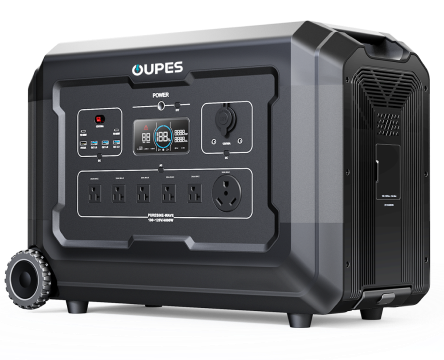
Have you ever wondered how much energy the sun can provide for your home, RV, or portable power station? As solar technology becomes more accessible, many are eager to understand how much power they can realistically generate with solar panels. Whether you're looking to lower your electricity bills, reduce your environmental impact, or live fully off-grid, knowing the potential of solar energy is key to making the right investment.
In this guide, we’ll explore how solar power works, the factors that influence energy output, and how different solar setups compare—covering everything from residential systems to compact portable generators.
What Influences Solar Energy Production?
Several core factors determine how much energy solar panels can produce:
- Sunlight exposure: More sunlight equals more energy. Regions with long, clear days generate more solar power than areas with frequent cloud cover.
- Panel efficiency: Commercial solar panels typically have an efficiency of 15% to 22%. Higher efficiency models generate more power in less space, ideal for rooftops or mobile applications.
- Panel orientation and tilt: For maximum output, panels should face true south in the Northern Hemisphere (or true north in the Southern Hemisphere) and be tilted based on your latitude.
- Shading: Any shade—even on a small part of the panel—can significantly reduce performance.
- Temperature: Solar panels actually operate more efficiently in cooler conditions, as extreme heat can decrease output.
How Much Energy Can a Home Solar System Produce?
Residential solar systems usually range from 3kW to 10kW. On average, each 1kW of solar capacity generates about 4kWh per day in optimal conditions. A typical 5kW system can produce around 20kWh per day or 600kWh per month—often enough to meet the energy needs of an average household in the U.S.
Factors like energy-efficient appliances, insulation, and seasonal variations will affect total output and usage. Battery storage and net metering further enhance the utility of home solar systems by storing excess energy or offsetting grid consumption.
Solar Output from Portable Generators
Portable solar generators are ideal for camping, RV life, or emergency backup. These devices are rated in watt-hours (Wh) and can typically be recharged with foldable solar panels ranging from 100W to 400W. For example, a 200W solar panel might produce between 800Wh to 1,000Wh in a sunny day, sufficient for running small appliances like mini-fridges, lights, and devices.
To maximize output, choose a generator with an MPPT charge controller, which optimizes energy harvest, and look for models that allow multiple recharging methods, such as car or wall charging when solar isn't available.
Comparing Solar Across Different Applications
Solar systems come in various sizes tailored for specific needs:
- Small devices: Solar chargers (5W-20W) for phones or GPS units during outdoor trips.
- RVs and tiny homes: Systems around 500W-3,000W can run essentials like refrigerators and lighting.
- Residential setups: 3kW-10kW systems cover the energy needs of most households.
- Utility-scale farms: These massive installations, measured in megawatts, power thousands of homes with clean energy.
How to Maximize Your Solar System’s Performance
To get the most out of your solar system:
- Ensure proper panel placement and tilt for year-round efficiency.
- Keep panels clean and clear of obstructions like debris or snow.
- Invest in high-quality batteries (like lithium-ion) for better storage and longer lifespan.
- Monitor your energy production with smart tools to track and optimize performance.
High-quality equipment from reputable brands, combined with regular maintenance, ensures your system delivers reliable energy for years to come.
Conclusion
Solar power is a versatile, renewable energy solution capable of powering everything from personal devices to entire homes. By understanding what impacts energy production and tailoring your system to your specific needs—whether at home, on the road, or off-grid—you can harness the sun’s power effectively and sustainably.




























